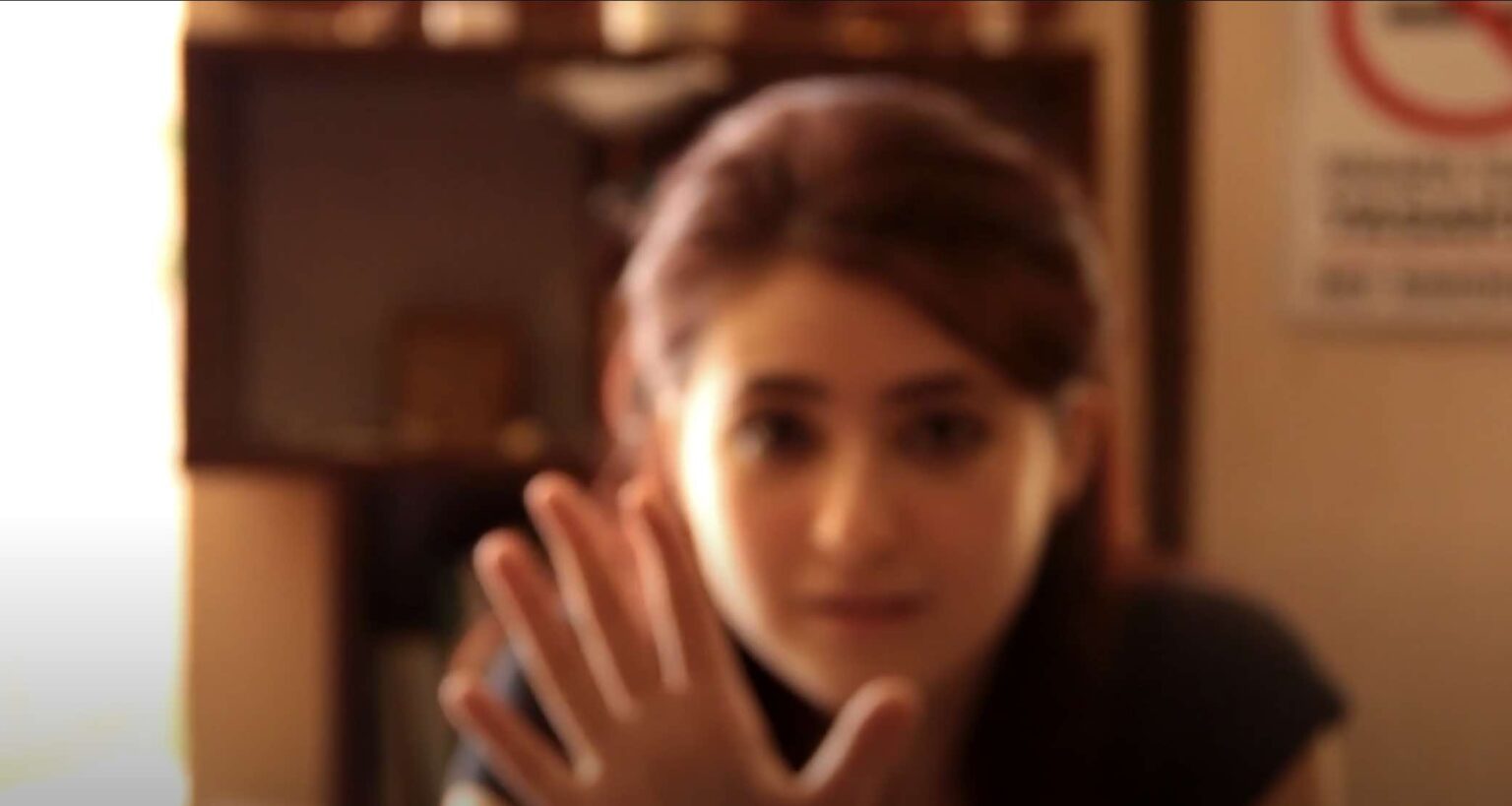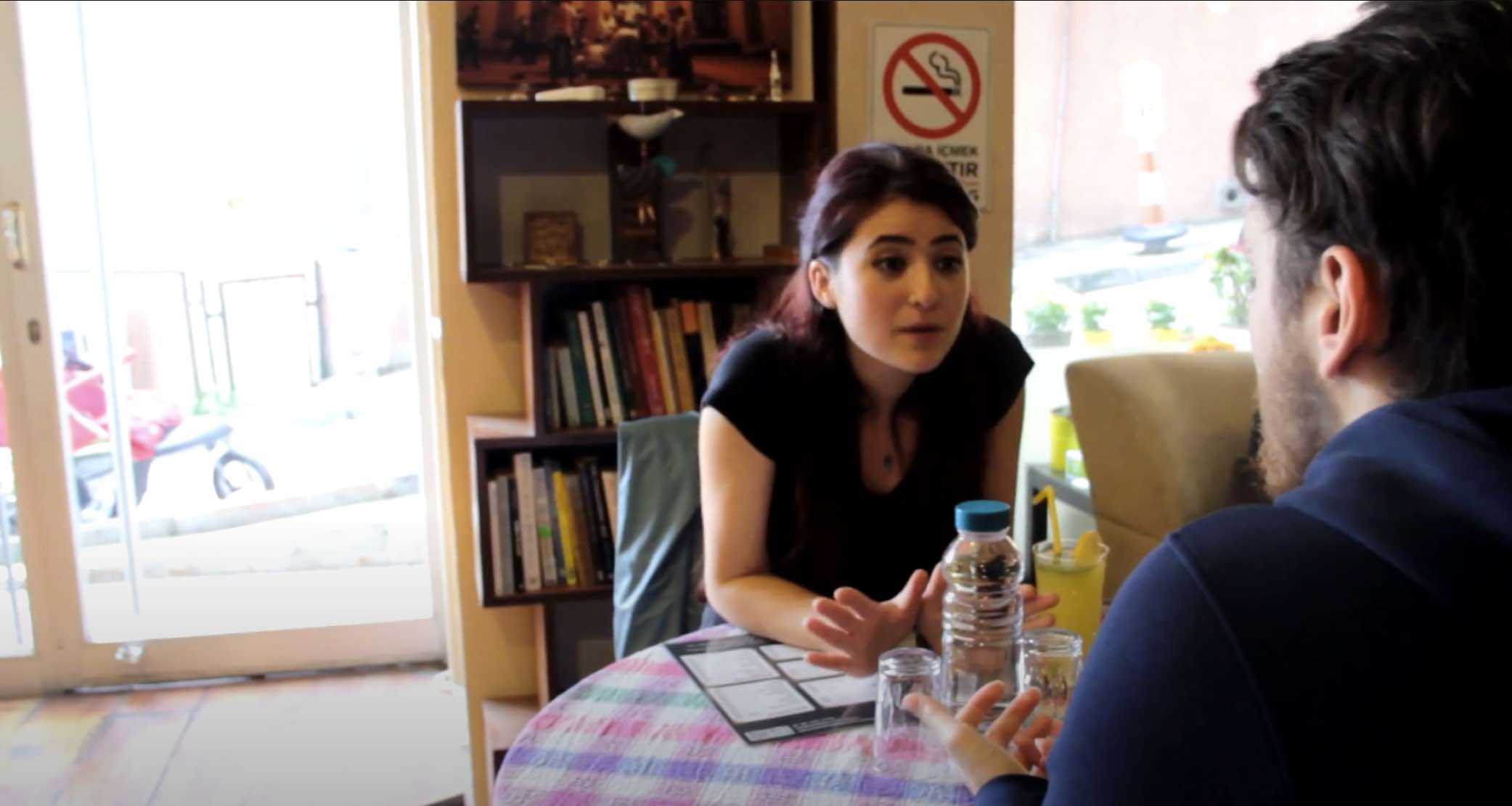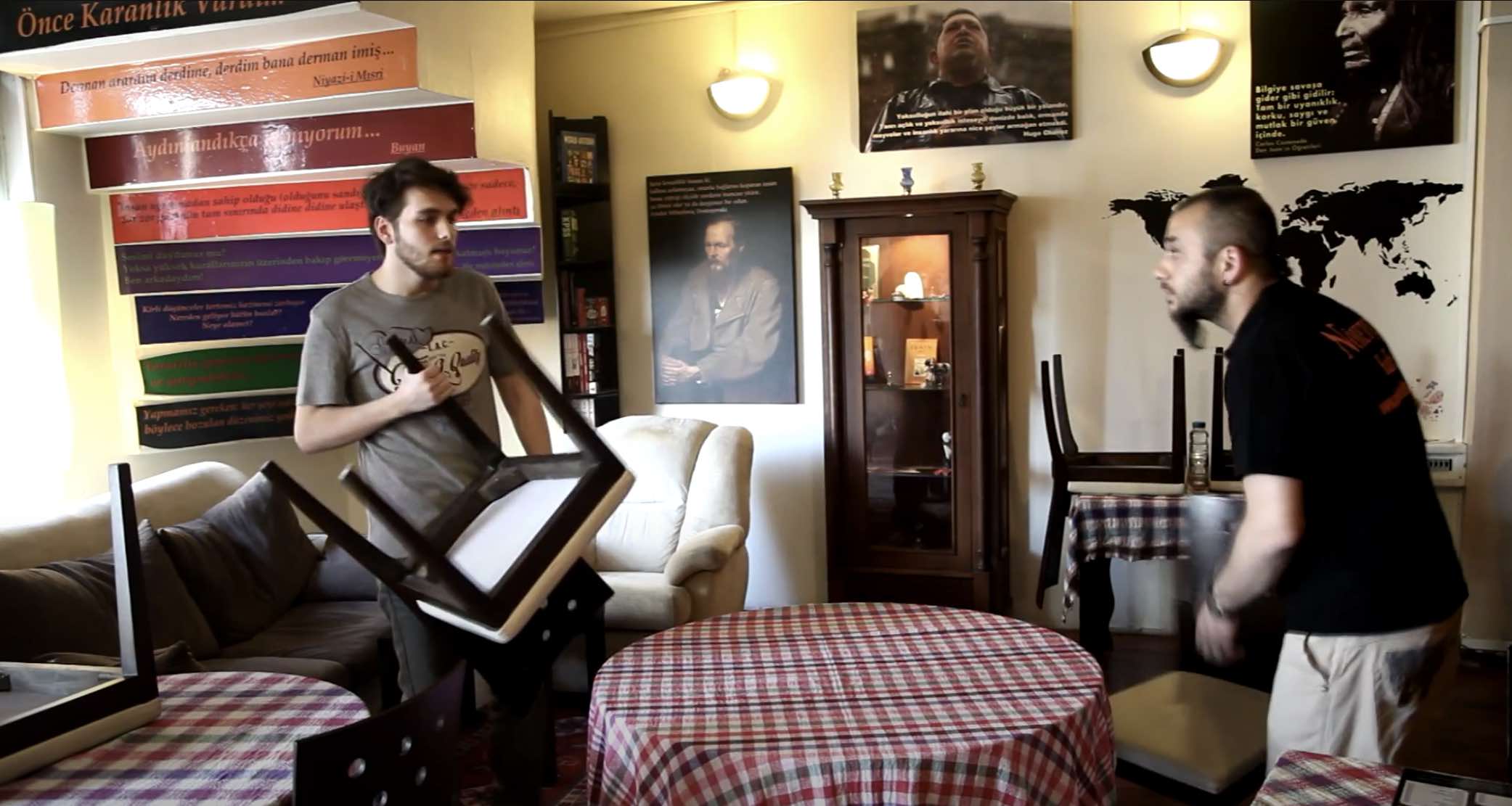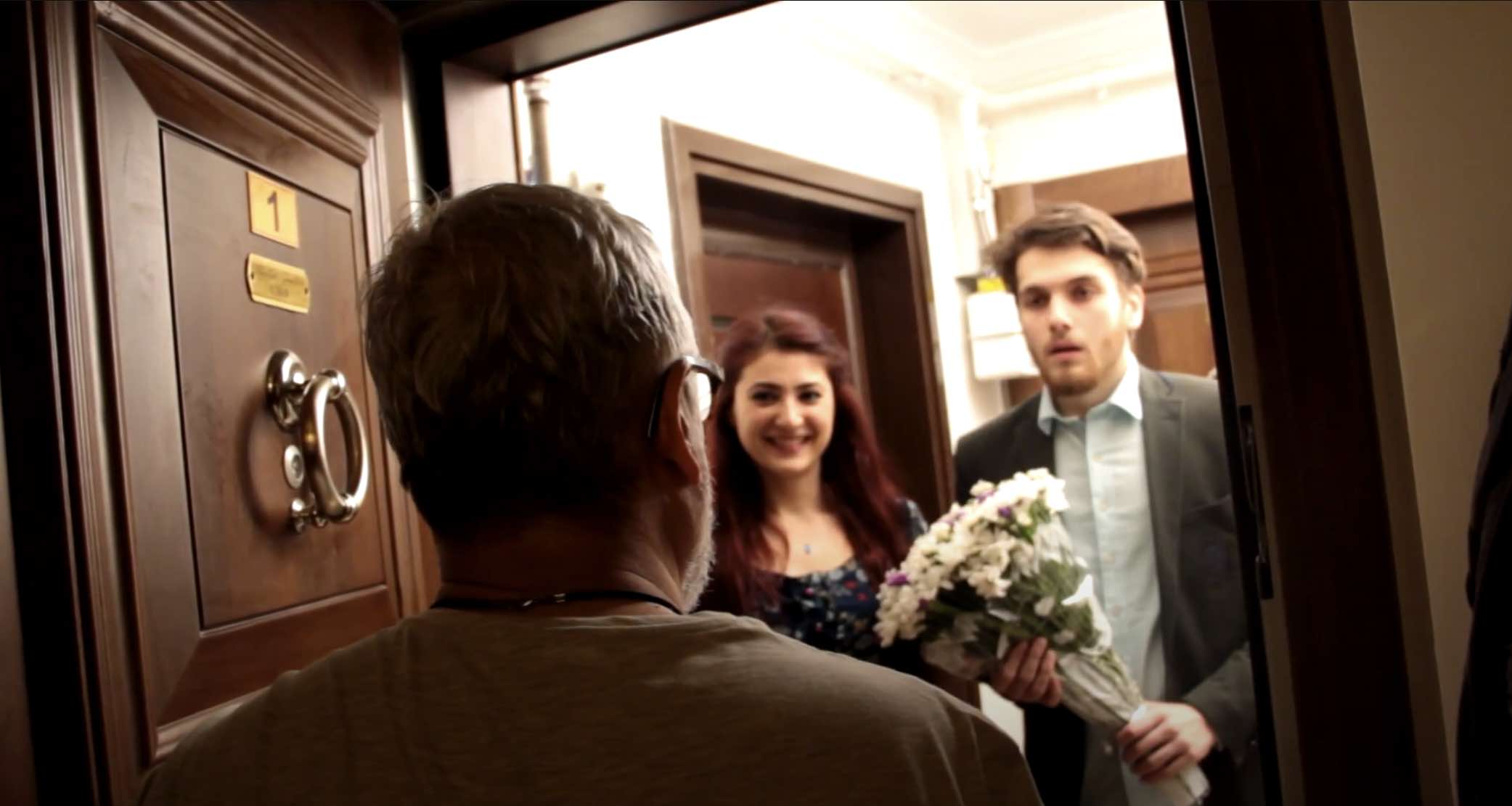
Take Flight With Filmmaker Sohbet Baylyyev: An Interview on Film
Film Daily: Tell us about your history within the film industry. How did you get your start?
My history within the film industry began when I started studying cinema at university. I was always interested in film and had a passion for storytelling, so I decided to pursue this field of study to learn more about the craft. During my time in university, I had the opportunity to work on several student film projects. Some of them were really successful and could be found on YouTube.
This gave me hands-on experience with various aspects of the filmmaking process, including screenwriting, directing, producing, and editing. I found the process of making a film incredibly rewarding and loved being part of a team that brought a story to life.
Tell us about the first time you noticed things moving forward and accelerating in your career.
While studying, I took advantage of every opportunity to immerse myself in the world of filmmaking. I attended film sets whenever I could to observe the process and feel the atmosphere firsthand. I was fascinated by how the director and crew brought their vision to life and loved seeing the hard work and dedication that went into making a film.
During this time, I also had the opportunity to work as an extra figurant on several film sets. This experience allowed me to gain a deeper understanding of the filmmaking process and to see how every person on set played a crucial role in bringing a story to life. Being an extra figurant also gave me the opportunity to observe actors at work and to see how they brought their characters to life on screen.

Professionally and personally, what changes do you think were necessary to get to that next level where you were working regularly?
Professionally, I think the changes that were necessary to get to the next level in my career were a combination of hard work, persistence, and a willingness to learn and adapt.
One of the most important things I did was to seek out opportunities to work on film projects and to gain hands-on experience in different areas of production. I was always eager to learn new skills and take on new challenges, even if it meant starting from the bottom and working my way up.
I also made a conscious effort to build relationships with other professionals in the industry. I attended networking events, reached out to other filmmakers on social media, and volunteered my time to work on other people’s projects. This helped me to establish a reputation as a reliable and hardworking professional, which led to more opportunities down the line.
Personally, I think the biggest change I had to make was to be more confident in my own abilities and to trust my instincts. It can be easy to doubt yourself in such a competitive and ever-changing industry, but I learned to trust that I had the skills and knowledge necessary to succeed.
What were your influences growing up?
As a child, going to the theater was always a special occasion for me. I remember feeling the excitement build inside me as we got closer to the cinema, knowing that I was about to be transported to another world. The smell of fresh popcorn, the dimming of the lights, and the sound of the opening credits all added to the experience.
It was during those early theater trips that I first began to dream of becoming an actor. I was in awe of the actors on screen and the way they could make me feel so many different emotions with just a few words or gestures. I started to imagine myself in their shoes, imagining what it would be like to take on those roles and bring those characters to life.
And One of my biggest influences was my father, who was a big fan of classic Hollywood movies. We would watch old black-and-white films together, and he would tell me stories about the actors and directors who made them. I was particularly inspired by the work of directors like Alfred Hitchcock, Billy Wilder, and Stanley Kubrick, who had a unique vision and style that set them apart from other filmmakers.
As I got older, I became more interested in contemporary cinema and began to discover new directors and actors who would influence my own work. I was particularly inspired by the work of Quentin Tarantino, Martin Scorsese, and Christopher Nolan, who were pushing the boundaries of what was possible in film.

What are your newest influences that inspire you today?
As a filmmaker and content creator, I’m always looking for new influences and sources of inspiration that can inform my work and help me to stay current with the latest trends and techniques in the industry. Here are some of my newest influences that inspire me today:
1 – Social Media: As someone who has built a following on Instagram with my pages Cinema Perspective and Cinemapov, I’m constantly inspired by the creativity and innovation of other content creators on social media. Whether it’s a new video editing technique, a unique storytelling format, or a clever marketing strategy, there’s always something new and exciting to discover on social media.
2 – Independent Filmmakers: I’m a big fan of independent filmmakers who are pushing the boundaries of what’s possible in cinema. These filmmakers often work with smaller budgets and limited resources, but they are able to create powerful and thought-provoking films that challenge the status quo. I’m inspired by their willingness to take risks and their commitment to telling stories that might not otherwise be heard.
3 – Virtual Reality: As technology continues to evolve, I’m fascinated by the potential of virtual reality to transform the way we experience movies and storytelling. VR allows us to create immersive and interactive experiences that blur the line between reality and fiction, and I’m excited to explore the possibilities of this new medium.
4 – International Cinema: I’m always on the lookout for new and exciting films from around the world that offer a fresh perspective on the human experience. From South Korean thrillers to Iranian dramas to Brazilian comedies, there’s a wealth of great cinema being produced outside of Hollywood that deserves to be seen and appreciated.
Overall, my newest influences are a reflection of my commitment to staying current with the latest trends and techniques in the industry, while also seeking out new and diverse voices that can help me to expand my own creative vision.

You run two very successful Instagram profiles about cinema. Tell us about the types of scenes you like to focus on.
As the creator of Cinema Perspective and Cinemapov, I’m passionate about all aspects of cinema and love to showcase a wide variety of scenes and genres on my Instagram profiles. That being said, there are a few types of scenes that I particularly enjoy focusing on.
One type of scene that I love to highlight is the emotional climax of a movie. These are the scenes that really hit you in the gut and make you feel something profound. Whether it’s a heart-wrenching breakup scene or a triumphant moment of victory, these emotional climaxes are what make movies truly memorable and impactful.
Another type of scene that I like to showcase is the use of visual storytelling. I believe that movies are a visual medium and that the best filmmakers are able to tell a story not just with words, but with images. Whether it’s a stunning landscape shot, a creative use of lighting, or a clever visual metaphor, I love to highlight the ways in which filmmakers are able to use visuals to enhance the storytelling experience.
Finally, I’m also passionate about scenes that challenge the viewer and push the boundaries of what’s possible in cinema. These could be scenes that use unconventional storytelling techniques, like non-linear narratives or experimental editing, or scenes that tackle taboo or controversial subjects in a thought-provoking way.
Let’s talk about your most viral posts. What is it about certain movie scenes that become more popular than others?
As someone who runs two successful cinema-related Instagram profiles, I’ve certainly had my fair share of viral posts. In my experience, there are a few key factors that can make a movie scene go viral on social media.
First and foremost, I think that relatability is a key factor. When a movie scene taps into a universal human emotion or experience, it can resonate with a wide audience and generate a lot of engagement on social media. For example, a scene that captures the feeling of falling in love or the pain of heartbreak can be incredibly relatable to people across different cultures and backgrounds.
Another factor that can contribute to a post going viral is the visual appeal of the scene. Whether it’s a stunning landscape shot, a dynamic action sequence, or a beautifully composed shot that uses light and shadow in an interesting way, scenes that are visually striking are more likely to capture people’s attention on social media.
Timing can also be an important factor in whether or not a post goes viral. For example, if a particular movie or actor is trending online for some reason, posting a scene related to that movie or actor can help capitalize on that momentum and generate more engagement.
I think that education is also an important aspect of my social media content. I want my audience to learn about cinema through my pages, which is why I created one of my most viral posts. I edited the scenes of all actors who have won the Oscars from the beginning to the last Oscar winners and shared it as a chronological series of posts.
I also created posts that showed behind-the-scenes footage of films, which I paired with the finished scene to demonstrate how movie magic is made.
Finally, a sense of nostalgia can also contribute to the virality of a post. When a movie scene taps into people’s fond memories of their childhood or a particular time in their life, it can evoke a strong emotional response and generate a lot of shares and likes.

Your Instagram profiles showcase a lot of American cinema. What movies from other countries have you been inspired by?
While I do indeed feature a lot of American cinema on my Instagram profiles, I’ve also been heavily inspired by movies from other countries. As a student of cinema, I believe that exploring different film cultures is crucial to gaining a deeper understanding of the medium and discovering new sources of inspiration. I watch and follow many countries’ films.
One country whose cinema has been particularly inspiring to me is South Korea. The country has produced some truly innovative and powerful films in recent years, such as Bong Joon-ho’s “Parasite”, “Memories of Murder” and Park Chan-wook’s “Oldboy.” I’m drawn to the way that these films often combine genre elements with social commentary, creating works that are both thrilling and thought-provoking.
I’ve also been influenced by the work of French New Wave directors like Jean-Luc Godard and Francois Truffaut, whose films revolutionized the medium in the 1960s. Their use of jump cuts, hand-held cameras, and naturalistic acting techniques broke with the conventions of traditional Hollywood cinema and paved the way for a more personal and experimental approach to filmmaking.
Russian Filmmaker Tarkovsky’s films, such as “Stalker” and “Solaris,” are renowned for their poetic and philosophical approach to storytelling, as well as their stunning visual imagery. His films have had a major influence on many filmmakers who have followed in his footsteps.
Iranian director Abbas Kiarostami, whose films, such as “Taste of Cherry” and “Close-Up,” are known for their minimalism and poetic sensibility.
Hong Kong Filmmaker Wong Kar-wai is also a director whose work I greatly admire. His films, such as “Chungking Express” and “In the Mood for Love,” are known for their stylish visuals, complex characters, and evocative soundtracks. I think his films offer a unique perspective on the human experience, and I find his use of music and color to be particularly inspiring.
Finally, I’ve also been inspired by the works of Japanese directors like Akira Kurosawa and Yasujiro Ozu. Kurosawa’s epic samurai films, such as “Seven Samurai” and “Yojimbo,” are masterpieces of action and storytelling, while Ozu’s contemplative family dramas, like “Tokyo Story,” are deeply moving and meditative.

Let’s talk about Istanbul. In your opinion, which Turkish films are required viewing?
Istanbul is a city with a rich cultural heritage, and Turkish cinema has played a significant role in shaping its identity. In my opinion, there are several Turkish films that are required viewing for anyone interested in cinema, especially Nuri Bilge Ceylan’s filmography. He is one of the most accomplished and internationally acclaimed filmmakers to emerge from Turkey in recent years.
His films, including “Uzak” and “Winter Sleep,” are characterized by their slow pacing, long takes, and introspective character studies, and they have won numerous awards and accolades at film festivals around the world. Personally, I am a big fan of Ceylan’s work, and I think he is one of the most important voices in contemporary Turkish cinema.
“Yol” (The Road, 1982): Directed by Yılmaz Güney and Şerif Gören, “Yol” is a powerful drama about five prisoners who are granted a week’s leave from prison and the challenges they face upon their return to their villages.
“Süt” (Milk, 2008): Directed by Semih Kaplanoğlu, “Süt” is a poignant drama about a young boy who tries to come to terms with the sudden disappearance of his father.
“Mustang” (2015): Directed by Deniz Gamze Ergüven, “Mustang” is a powerful coming-of-age drama about five sisters growing up in a conservative village in Turkey and the restrictions placed on them by their family and society.
You have quite a history as a video editor. When it comes to movies in other languages, what kind of editing style do you think is most effective in reaching larger audiences?
As an editor, I believe that the most effective style for movies in other languages to reach a larger audience is to focus on telling a clear and engaging story. This means finding the right pacing, rhythm, and tone that will resonate with viewers, regardless of their language or cultural background.
It’s also important to pay close attention to the nuances of the dialogue, music, and sound effects, in order to create a fully immersive experience that will capture the attention and imagination of the audience. Overall, the key is to strike a balance between the artistic vision of the director and the commercial needs of the film, while remaining true to the essence of the story and the characters.

Over the last 5 years, which films do you think got the biggest snubs at the Oscars?
Each year, there are a number of films that are widely considered to have been snubbed at the Oscars. Some of these movies may have been critically acclaimed or commercially successful, while others may have flown under the radar but still received significant praise from critics and audiences alike. One of them for me is definitely last year’s “Babylon” by Damien Chazelle. This film was Cinema in its purest and most unadulterated form made for Cinema lovers.
And in recent years, some of the films that were perceived as snubs include “The Farewell,” a heartfelt drama about a Chinese-American family dealing with a terminal diagnosis, and “Uncut Gems,” a tense and thrilling crime drama starring Adam Sandler. Both of these films were well-received by critics and audiences, but were not recognized in major categories at the 2020 Oscars.
Similarly, “If Beale Street Could Talk,” a powerful and poetic adaptation of James Baldwin’s novel about a young African-American couple fighting for justice in 1970s New York, was overlooked in many major categories at the 2019 Oscars. Likewise, “First Man,” a visually stunning and emotionally powerful biopic of astronaut Neil Armstrong, was largely snubbed despite receiving strong critical acclaim.
Other films that were considered to have been snubbed in recent years include “The Florida Project,” a poignant and often heartbreaking portrait of childhood on the fringes of society, “Silence,” a deeply spiritual and introspective epic from acclaimed director Martin Scorsese, and “Carol,” a lush and elegant period drama about forbidden love in the 1950s.
While the Oscars are always a matter of subjective opinion, it’s clear that there are always a number of great films and performances that don’t receive the recognition they deserve. However, the fact that these movies continue to be beloved by audiences and critics alike is a testament to their enduring impact and importance in the world of cinema.

As a video editor, what are the three most important things you tend to focus on first once you receive all the raw footage?
As a video editor, there are several key things that I tend to focus on when I first receive raw footage. However, if I had to narrow it down to three, I would say that the following are the most important:
Organization: One of the first things I do when I receive footage is make sure that it is properly organized and labeled. This involves creating a folder structure that makes sense for the project and labeling each clip with a descriptive name. I also make sure that I have all of the necessary footage before I begin editing.
Storytelling: Once everything is organized, I start to focus on the story that I want to tell. This involves watching through all of the footage and starting to piece together the shots that will best convey the narrative that I am trying to create. I pay close attention to the pacing of the footage and try to make sure that the story is engaging and holds the viewer’s interest.
Technical quality: As I’m piecing together the footage, I also pay close attention to the technical quality of the clips. This includes things like lighting, sound, and color grading. I make sure that everything looks and sounds as good as possible so that the final product is polished and professional. This may involve adjusting the levels of the audio or color grading the footage to make sure that it matches the mood and tone of the project.
In addition to these key areas, there are other factors that may be important depending on the specific project. For example, if I am editing a music video, I may focus more on the timing of the footage to match the beat of the music. Similarly, if I am editing a commercial or promotional video, I may focus more on highlighting the features of the product or service being advertised.
Overall, the key to effective video editing is to have a clear vision of the final product and to be able to execute that vision using the available footage. By focusing on organization, storytelling, and technical quality, I am able to create videos that are engaging, polished, and professional.
Do you embrace artificial intelligence when it comes to video editing? If so, in what ways would you like AI to make your workflow more efficient as a video editor?
To be honest, I haven’t used AI that much but Artificial intelligence has been integrated into many aspects of video editing, from automated tools for color correction and audio enhancement to advanced machine learning algorithms that can detect and categorize specific types of footage.
One of the most significant benefits of AI in video editing is the potential to automate repetitive tasks, allowing editors to focus on more creative and nuanced aspects of their work. For example, AI can help with tasks like organizing footage, identifying similar shots, or even assembling rough cuts automatically.
In the future, many experts predict that AI will play an even more significant role in video editing, with the potential to revolutionize the way that editors work. However, it’s important to note that while AI can be a valuable tool for video editing, it’s not a replacement for human creativity and expertise. Ultimately, the best results will come from a balance of both AI and human input.

Let’s talk about the Oscars. Do you think there are newer awards that carry more or equal merit now than in the past for video editing?
The Oscars have traditionally been considered the highest honor in the film industry, and winning an Academy Award is still a significant achievement for filmmakers and video editors.
However, in recent years, there has been a growing recognition of other awards shows, such as the BAFTA Awards, the Golden Globe Awards, and the Critics’ Choice Awards. These awards also carry a significant amount of prestige and can influence a filmmaker’s career trajectory.
Additionally, as new technologies and platforms emerge, such as streaming services, there may be new awards and recognition opportunities for video editors and filmmakers who work in these areas. Ultimately, the value and significance of awards in the film industry are subjective and can vary based on personal perspectives and individual goals.
What other projects do you have on the horizon?
I’m currently working on a couple of exciting projects that I’m really passionate about. The first is exploring the potential of blockchain technology for content distribution.
As we all know, the film industry has traditionally been heavily reliant on centralized distribution channels, which can limit access to diverse content and make it challenging for independent filmmakers to get their work seen by wider audiences. By leveraging blockchain, we can potentially create a more decentralized and accessible distribution model, which would be a game changer for the industry.
The other project I’m involved in is exploring the emerging field of the metaverse. This concept is essentially a fully immersive and interactive digital world where people can interact with each other and digital objects in real-time.
As someone who has always been interested in the intersection of technology and art, I’m fascinated by the creative possibilities of the metaverse for storytelling and filmmaking. It’s still a nascent field, but I believe it has the potential to revolutionize the way we experience media and entertainment.



